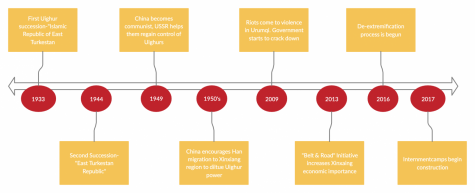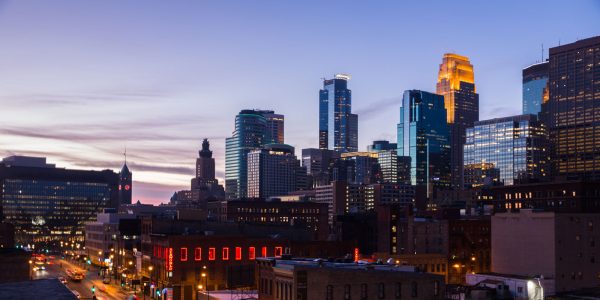Chinese Muslim internment camps

China has been a frequent topic in American news outlets recently, primarily due to the current trade war with President Trump. Recently though, another topic has found its way into the mainstream thanks to a viral social media post from a U.S. teen.
This Tik Tok post from Feroza Azizir posed as a beauty lesson before she began pleading with her viewers to research “concentration camps in China.” The video proceeded to go viral, garnering tens of millions of views on numerous social media outlets including Tik Tok, Twitter, Instagram and YouTube.
Her video gave this issue the first viral attention it has received in America, shocking millions of people. This topic is a complex one involving the detainment of nearly 1 million Uighurs, the predominantly Muslim minority of the Xinxiang region in Western China.
This region is located much closer to the capitals of Uzbekistan and Kazakhstan than the Chinese capital of Beijing, and Uighur culture reflects this. Their culture is far more aligned with these groups than that of the Han Chinese majority, and it has caused conflict with Chinese government powers for nearly 9 decades.
Uighurs have had two different occasions of separatist movements, the first of which occurred in 1933 when a group of Uighurs formed the Islamic Republic of East Turkestan. This only lasted a year though before it crumbled from Chinese government intervention.
The next occasion wasn’t until 1944 when the USSR helped a group of Uighurs succeed from China and form the East Turkestan Republic. This state lasted only until 1949 when China became a communist party and the USSR aided them in retaking the region.
China is so concerned with the Xinxiang region due to its rich supply of energy resources. Xinxiang accounts for 40% of China’s coal reserves, 20% of its oil and gas, and 20% of its potential for wind energy.
Concerned with the Uighur tendency of succession, China encouraged the migration of Han to the region in 1950 to dilute the Uighurs’ influence in the region, and it worked. In 1945 Uighurs made 82% of the population in the region opposed to just 6% for Han Chinese. In 2008 this shifted to Uighurs making up 46% of the population and Hans owning a 39% stake. In addition to this, the Hans controlled a large majority of the high paying jobs in Xinxiang.
This conflict hit a turning point in 2009 when Uighur protests against the Han majority and Chinese government’s oppression turned violent. Riots in the provincial capital of Urunqi resulted in the death of over 200 people and injuries to hundreds more.
Then in 2013 China launched its “Belt & Road” initiative, a trillion-dollar program meant to increase China’s attract ability as a trade partner. A large majority of these projects were invested in the Xinxiang region, making it the most important Chinese region in the project. As a result of this, China began to look for ways to gain more secure control of the region.
This manifested in the form of de-extremification policies launched in 2016. These policies turned the region into a high-tech police state essentially. Muslims were jailed for having too long of beards, they had to hand over their phones for inspection at police checkpoints, and they had to post QR codes outside their homes for government surveillance.
Following this, in 2017, the Chinese government began the construction of their internment camps. They detained Uighurs, deeming them terrorist and separatist threats. Uighurs were required to recite Chinese propaganda and criticize their own beliefs. Reports have come in of abuse, torture, and death occurring in these camps.
Initially China denied the existence of these camps in entirety, but grassroots research efforts from several academics forced them to backtrack. People across the globe compiled evidence consisting of official government documents, satellite images, and one incriminating photo discovered by Timothy Grose, a professor of China studies at an American University.
The picture was the entrance to one of the internment camps stating that it was a de-extremification re-education camp. This picture proved the existence of the structures found on satellite images to be for the purpose of detaining minority Uighur groups.
After the picture was made public, the Chinese government accepted the existence of these camps, but they framed them as training schools for criminals and terrorists.
Today the population inside these camps continues to grow, and the situation is unlikely to improve for Uighurs without foreign intervention. China seems to be okay with maintaining control of the Xinxiang region at high human cost while taking a hit to their international reputation. There figures to be more developments on this issue in the near future.




